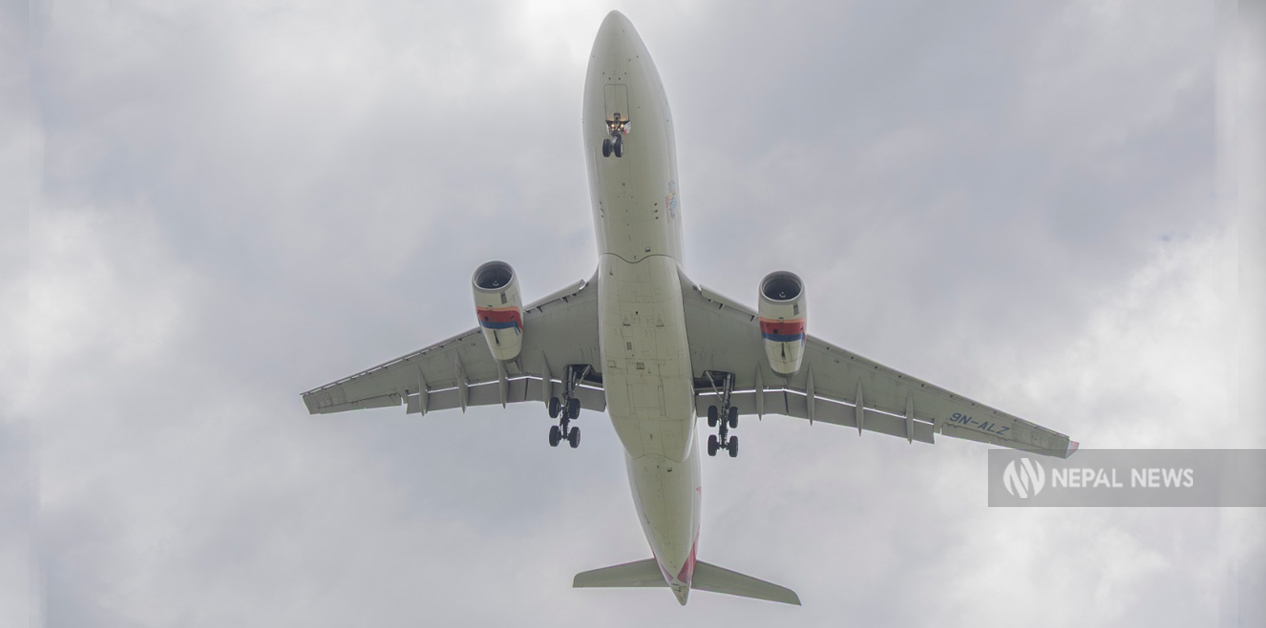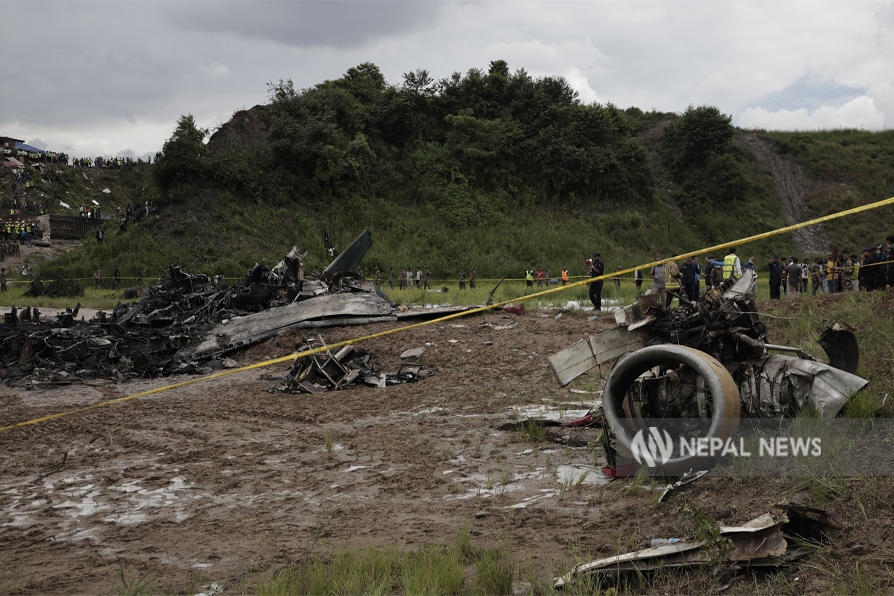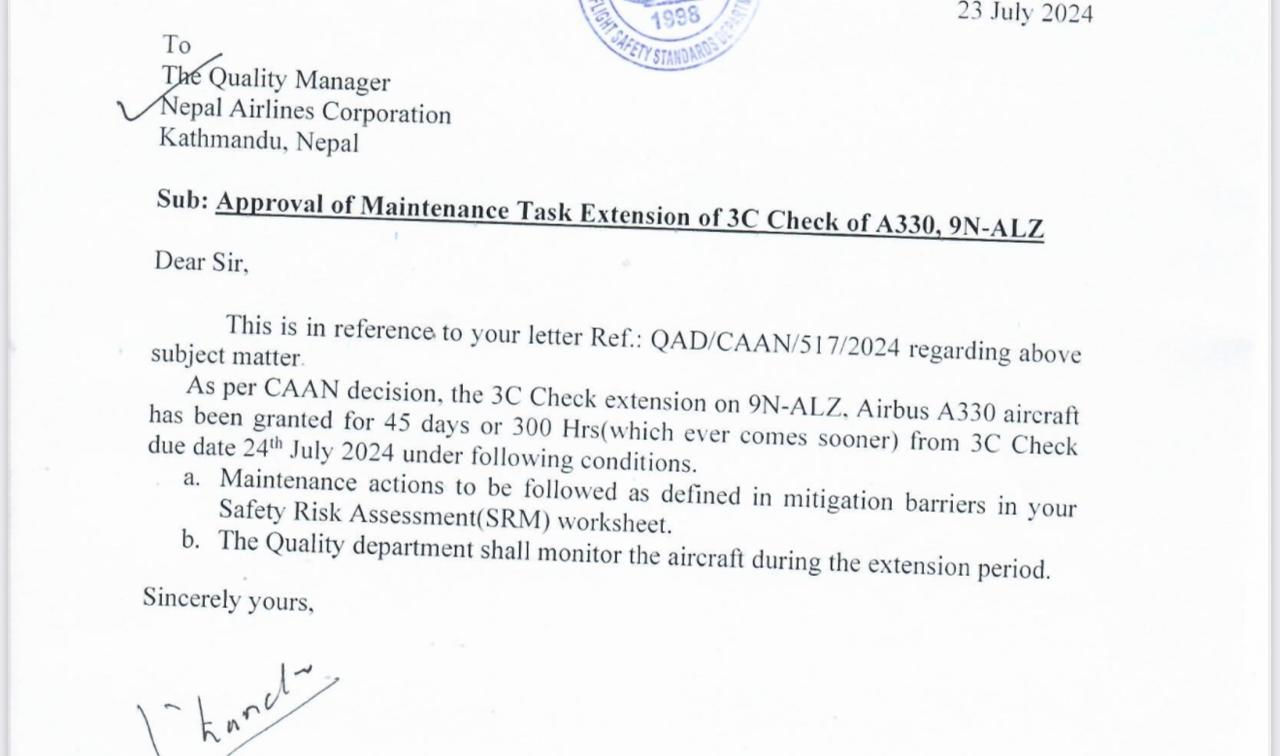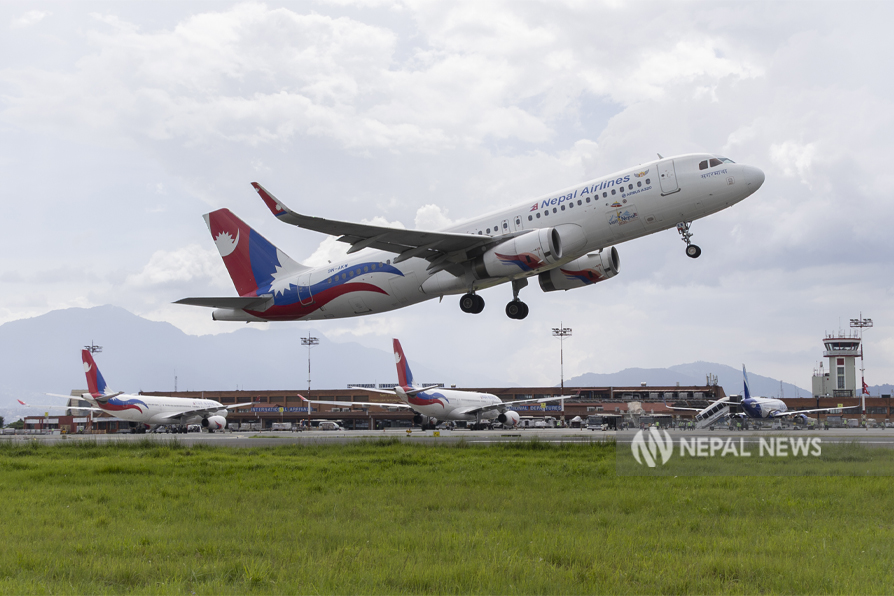
Following orders from then-Prime Minister KP Oli, Nepal Airlines Corporation’s wide-body aircraft Makalu flew for more than a month while bypassing its C-check.

KATHMANDU: Afternoon of July 24, 2024. Just seconds after taking off toward Pokhara, Saurya Airlines’ Bombardier aircraft suddenly crashed within the premises of Tribhuvan International Airport. In the tragic crash, all 18 people on board—except the captain—lost their lives.
It was later revealed that the aircraft was not on a regular passenger flight but was heading to Pokhara for a “C-check.” Hence, most of those on board were Saurya Airlines’ technicians, staff members, and their family members, along with a few passengers.
In aviation terminology, maintenance and inspection procedures are categorized as “A-check” and “C-check.”
The C-check is a comprehensive and detailed inspection phase in which every part of the aircraft is thoroughly examined to ensure it is fully airworthy before returning to flight operations. It is considered the most critical phase in aircraft maintenance and safety assurance.
While the nation was still reeling from the grief and horror of the Saurya Airlines C-check crash, Nepal Airlines’ wide-body Airbus A330 aircraft, “Makalu,” was found to be flying with passengers over French airspace without undergoing its scheduled C-check. The aircraft had been slated to fly to Italy for the same inspection just days earlier.
Wide-body aircraft are required to undergo a mandatory C-check after completing 12,000 flight hours. The Nepal Airlines Airbus A330 “Makalu” had successfully completed its second 12,000-hour flight cycle.
However, the pressing question remains: Why was the aircraft not immediately sent for inspection? Why was a decision made to operate the flight, putting hundreds of passengers at risk? Had an accident occurred, who would have taken responsibility for the potential loss of life and the damage to the nation’s reputation? There are many questions—but no one seems willing to take accountability.
According to Yubaraj Adhikari, Executive Chairman of Nepal Airlines Corporation, the decision was taken because both of the corporation’s wide-body aircraft would have been grounded simultaneously for C-checks if Makalu had been taken out of service. The other wide-body aircraft, “Annapurna,” had already reached Italy for its C-check on June 23, 2024.

The Saurya Airlines aircraft, which was flying for a C-check, crashed within the premises of Tribhuvan International Airport. Photo: Bikram Rai/Nepal News
The airline operator, Nepal Airlines Corporation, did not have the authority to make such a serious decision to bypass a C-check on its own. For such exceptions, approval from the regulatory body, the Civil Aviation Authority of Nepal (CAAN), is mandatory. For this purpose, the corporation requested the authority to extend Makalu’s flight allowance by 300 hours. However, the authority rejected the request.
Next, the airline leadership tried to influence the process through UML Deputy General Secretary Pradeep Gyawali, who had previously served as Minister of Culture, Tourism, and Civil Aviation. Yet, this approach also failed.
Afterward, the executive chairman of the corporation approached former Finance Minister Yubaraj Khatiwada, who was then serving as Prime Minister KP Sharma Oli’s economic advisor. Following instructions from Khatiwada, the chairman again requested CAAN leadership to extend the flight hours—but the authority once more refused.
At this point, the chairman had only one option: then-Prime Minister Oli. On July 22, 2024, the day before Makalu was scheduled for its C-check, the chairman met the Prime Minister at Baluwatar. He explained his concern: If both wide-body aircraft underwent C-check simultaneously, international flights would be affected, and the national carrier would be grounded. Therefore, Makalu needed to be temporarily kept in operation.
That evening, then-Prime Minister Oli personally called CAAN Director General Pradeep Adhikari and instructed him to extend the aircraft’s flight hours. Consequently, for the first time in Nepal’s aviation history, a plane that was due for a C-check was granted an additional 300 hours of flight. The regulatory authority’s decision-making power was rendered helpless against political influence and institutional pressure.
Under then-Prime Minister Oli’s order, CAAN issued the flight extension permit on July 23, 2024, to Nepal Airlines for the wide-body Airbus A330 Makalu, allowing 300 additional flight hours (approximately 45 days) with conditions. The airline was required to implement risk mitigation measures and maintain aircraft monitoring. “Makalu was allowed 300 flight hours for operation by the airline with conditions from the Air Safety Quality Department,” said CAAN Information Officer Gyanendra Bhul.
Thankfully, Makalu was spared. But to ignore a C‑check and operate the aircraft—disregarding the lives of the passengers and their families aboard a plane with a capacity of just under 300—is itself a kind of “crime.”

The letter from the Civil Aviation Authority of Nepal approving an additional 300 flight hours.
“The decision to postpone Makalu’s C‑check is a dangerous tendency to sacrifice safety under pressure,” says Captain Kul Bahadur Limbu, former General Manager of Nepal Airlines Corporation, who has flown more than 13,000 flight hours on international routes. “You cannot extend the time for an aircraft that must go for a C‑check; let alone fly it with passengers aboard,” Limbu says. “Except in an emergency or if the country is in crisis, flying an aircraft that is due for a C‑check is illegal.”
Former Director General of CAAN, Ratish Chandra Lal Suman, also emphasizes that according to aviation standards, aircraft maintenance, inspections, licensing, and monitoring must be conducted regularly and in emergencies. “Operating an aircraft without following these standards for routine inspection and maintenance is a gamble with passengers’ lives,” he says.
What is particularly surprising is that the regulatory authority that granted Nepal Airlines permission to extend Makalu’s flight hours did not record the 300-hour extension in its official “Record of Extension/Concession/Exemption” list.
A flight authorized to operate an aircraft due for a C-check is called a “ferry flight.” On such flights, only the engineers and pilots involved in maintenance are on board. Operating a ferry flight by bypassing the C-check violates the safety standards of the International Civil Aviation Organization (ICAO), which mandates that aircraft cannot be flown without completing the scheduled maintenance.
The standard procedure is that the aircraft manufacturer and the regulatory authority determine the flight hours and timeline for the C-check in advance. Based on this, the airline prepares a maintenance schedule and, with regulatory approval, sends the aircraft for both regular and emergency maintenance. “Whether the aircraft has flown or remained grounded, the C-check schedule cannot be altered,” says Captain Kul Bahadur Limbu.
Aircraft manufacturers do not anticipate extending the flight time of an aircraft that has reached the C-check stage. At most, some components may allow a small “grace period” in the flight schedule, but only after inspection by engineers from the regulatory authority’s Air Safety Quality Department can such adjustments be approved.

Nepal Airlines’ Executive Chairman Yubaraj Adhikari says he submitted a request to CAAN one and a half months earlier to extend Makalu’s flight hours, but the request was not even registered. “After that, we approached the sectoral minister. I did not meet the Prime Minister. Even if I had, what difference would it have made?” he asks.
When questioned about why the airline risked flying the aircraft without performing the scheduled C-check, violating aviation regulations, Adhikari countered: “If it is not allowed to extend the flight time of a C-check aircraft, why did the authority grant permission? If someone says it cannot be done, why should we comply?”
As such, as Adhikari points out, the questions also extend to the regulatory authority.
Ultimately, the Makalu aircraft flew to Italy for its C-check only on August 29, 2024). After completing all inspections, it finally returned to Kathmandu on November 18, 2024, three months later. Since then, it has been operating safe and uninterrupted flights.